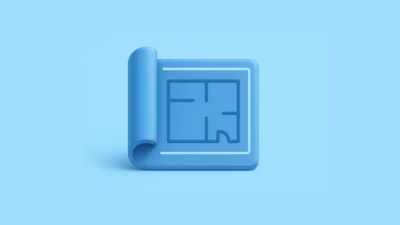You’ve decided you want to learn data science.
Big move. Exciting. Terrifying.
You’re imagining slick dashboards, crunching machine learning models, maybe even dropping “random forest” into casual conversation at parties.
But now the dreaded fork in the road:
Should you go all-in, full-time? Or balance it part-time while keeping your life afloat?
It feels like picking between two completely different worlds.
One promises immersion.
The other promises flexibility.
Both whisper the sweet promise of “you’ll be a data scientist soon.”
I wish I could tell you there’s a one-size-fits-all answer.
(Trust me, I tried looking for it too when I was in your shoes, googling at 2 a.m. like a caffeinated squirrel.)
Instead, what I found—and what you’re about to see—is that the right path depends less on the program…
and way more on you: your brain, your life, your stress tolerance, even your mortgage.
Let’s walk through this like two friends puzzling it out together.
I’ll tell you the real differences, sneaky challenges no one warns you about, and how to pick your best route without losing your sanity.
Full-Time Learning: The Deep Dive
Picture this:
You quit your job (or put it on pause), clear your schedule, and spend every day swimming in Python, SQL, machine learning algorithms, and a touch of existential dread.
You wake up. You code. You troubleshoot. You cry over confusing error messages.
Rinse. Repeat.
Growth.
The Promise:
- You can move fast—six months to a year and boom, new career.
- You stay immersed; concepts stick better because you’re living and breathing them daily.
- You get access to more structured mentorship, team projects, career support.
What People Don’t Always Tell You:
- It’s exhausting.
There’s no side project you can hide behind if you’re tired. No “I’ll catch up this weekend” excuse. It’s constant. - You need savings—or a safety net.
Living without income (or with reduced income) for months? Stress like that can sneak into your studies, cloud your brain, mess with your momentum. - Burnout is real.
You don’t get to just be a student. You also need to be your own therapist, motivator, and emotional coach some days.
When I did a full-time program myself, I learned way more, way faster than I ever expected.
But I also spent some days staring blankly at the wall wondering if my brain had quietly resigned without telling me.
Part-Time Learning: The Balancing Act
Now imagine this version:
You work your regular job.
In the evenings or weekends, you chip away at learning data science.
Slow and steady.
You still pay the bills. You still show up for friends’ birthday parties (mostly).
The Promise:
- Keep your income steady.
- Lower personal and financial risk.
- Time to absorb complex ideas more slowly, deeply.
The Hidden Reality:
- You’ll be tired. Like, really tired sometimes.
Imagine working 9–5, then studying for 2–3 hours every night.
Netflix will start missing you. Your social life will start suspecting you’ve died. - Progress feels slower—and it messes with your head.
Some nights you’ll barely have energy for a 10-minute tutorial.
And when you see full-time students posting shiny portfolio projects after two months? Yeah, comparison hits hard. - You’ll have to become a master at calendar Tetris.
Work meetings + family obligations + workouts + data science homework.
Some weeks, you’ll feel like a world-class juggler. Other weeks, everything will fall and you’ll have to forgive yourself quickly.
The cool part?
If you stay consistent—tiny, boring, everyday consistency—you’ll wake up six months later and realize you actually know things you didn’t think were possible.
Speed vs Retention: A Sneaky Tradeoff
One thing no one told me (but I wish they had):
Learning speed and memory retention don’t always play nicely together.
Full-time students often absorb more volume fast… but sometimes lose details just as fast because the pace is overwhelming.
Part-time students absorb less per week, sure.
But weirdly? They often retain better long-term, because there’s more space between learning bursts for the brain to process and consolidate.
I’ve seen full-time grads come out blazing, then hit knowledge gaps six months into their first job.
I’ve also seen part-time grinders who built ridiculously deep, battle-tested knowledge because they wrestled with ideas longer.
Neither approach is “better.”
Just different brains, different timelines.
Money, Stress, and Mental Health (Yeah, We’re Going There)
Full-time study sounds romantic until you’re three months in, your savings account is whimpering, and your brain is shouting things like:
- “What if I fail and can’t get a job?”
- “What if I need to take the first terrible job just to survive?”
- “What if I’m a fraud and shouldn’t have left my old career?”
This mental load? It’s real.
You need a financial runway and a mental health runway.
Part-time students dodge some of that financial pressure.
But they wrestle different demons: guilt (“I’m not learning fast enough”), frustration (“Everyone’s ahead of me”), overwhelm (“There’s no end in sight”).
Whichever path you pick, just know:
Doubt will visit. Burnout might flirt with you. Fear will text you at 3 a.m.
The trick isn’t avoiding these things.
It’s expecting them, greeting them politely, and not letting them drive the bus.
So… Which Path Should You Choose?
Let’s boil this chaos into real questions you can ask yourself:
1. How urgent is this career switch for me?
If you need out yesterday—because your current job is a soul-sucking dementor—full-time might make sense.
2. What’s my financial runway?
Full-time = zero or low income for months.
Be brutally honest about your budget.
3. How do I actually learn best?
- Thrive under pressure, love daily immersion? → Full-time.
- Need time to marinate ideas, hate cramming? → Part-time.
4. How stable is my personal life right now?
New baby? Sick parents? Wedding planning?
Major life events = maybe not the best time to dive into full-time intensity.
5. What does success feel like to me?
Fastest pivot possible? Or building deep, stable skills over time?
(Quick secret: employers don’t care how fast you learned.
They care if you can solve real-world problems when you show up.)
Final Pep Talk (Because You Deserve It)
Choosing between part-time and full-time isn’t just a scheduling decision.
It’s a self-honesty decision.
It’s looking at your messy, complicated life and picking a path that honors where you are right now—not where you think you “should” be.
And whichever path you pick?
The real win is staying on it long enough to cross the finish line.
There’s no gold medal for “fastest portfolio build” or “most Python libraries memorized.”
There’s only you, six months or a year from now, looking back and thinking:
“Holy crap. I actually did it.”
Spoiler:
You will.
You freaking will.





